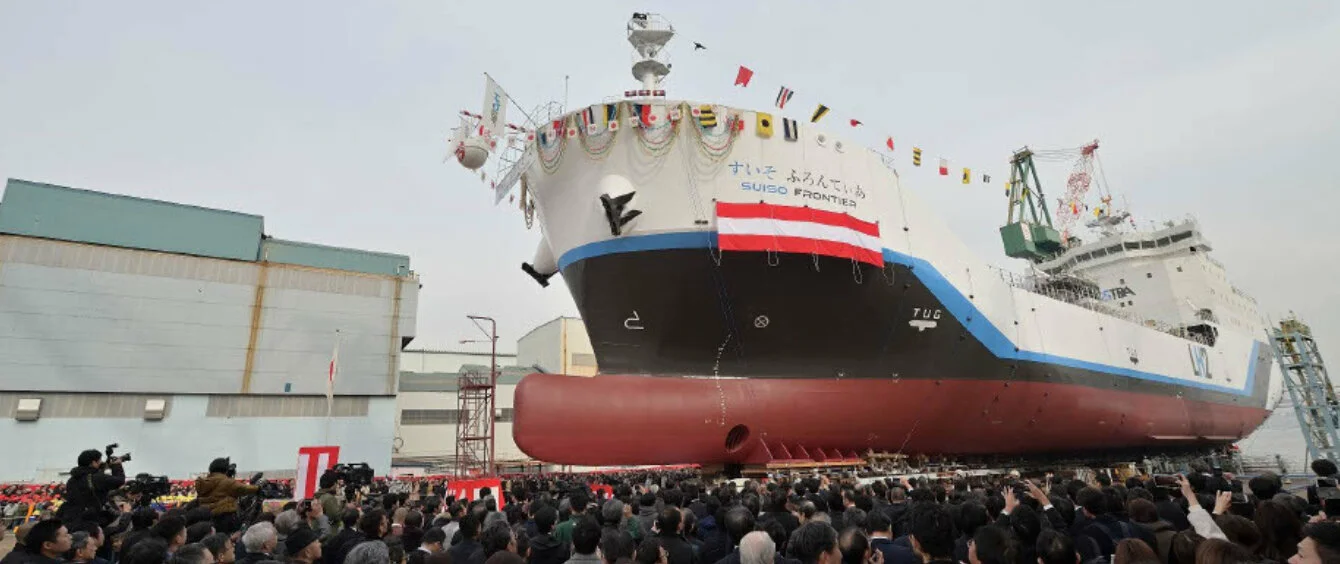Named ‘Suiso Frontier,’ the freighter is envisaged to transport 1,250 cubic metres of liquid hydrogen (H2). This does not sound like a daunting task given that the LNG ships from the same manufacturer, Kawasaki Heavy Industries, can accommodate more than 100 times as much liquefied natural gas. However, the freighter, which was let to water in Kobe in December, is slated to be the world’s first-ever H2 tanker.
Japan is placing more chips on the volatile gas than any other nation. In 2017, Prime Minister Shinzo Abe declared, “Japan will be the first in the world to realise a hydrogen-based society.”
In September 2019, the Japanese government announced that it had won the support of 30 countries for its plan to build 10,000 hydrogen filling stations worldwide within ten years. The gas stations are envisaged to be flanked by ten million H2 vehicles – from automobiles and trucks to trains and ships. International hydrogen trading standards are expected to assist in executing the plan.
The smallest molecule in the periodic table
The Suiso Frontier will be powered by a diesel generator. But the prototype is expected to deliver major findings on the transportability of the volatile gas. After all, this is one of the challenges faced when dealing with the first element in the periodic table: its molecules are so small that they can even diffuse through steel. Unlike synthesised methane, the greenhouse effect of hydrogen is believed to be immaterial. However, the economic damage caused by leaks would put hydrogen at a significant disadvantage relative to the alternatives.
Launch of the tanker
Therefore, similar to natural gas (LNG), the hydrogen will be liquefied prior to transport. The high pressure and extreme cooling to 253 degrees Celsius below zero cause hydrogen to change its state of aggregation, while also shrinking its volume 800-fold.
In this state, the Suiso Frontier should be able to transport hydrogen largely loss-free. The freighter is already at water, but the double-walled vacuum-insulated tank is still under construction at Kawasaki’s Harima factory. The ship is scheduled to be operational by the end of 2020 and make its first delivery of liquid hydrogen from Australia to Japan by early 2021.
Sustainable and more autonomous energy supply
In fact, since 2019, Australia has been pursuing its own national hydrogen strategy. Besides electrolysing water to hydrogen and oxygen, the country is intent on making coal and natural gas reserves usable without emitting greenhouse gases. To achieve this, hydrogen is precipitated from the fossil fuel and the remaining carbon dioxide is captured. The latter can be stored permanently and sold as a starting material for the chemical industry.
This is the prevailing way of producing hydrogen to date. Electrolysis could be especially appealing to Japan, with a view to building its own hydrogen production network. This would be a step towards the energy independence the country has long yearned for. According to figures published by the International Energy Agency (IEA), in 2018 Japan generated only 11.5 percent of the electricity the country consumed that year. Moreover, electrolysis would enable Japan to lower its emissions – at least if the electricity used in said method was generated from renewable energy sources.
Japan could start creating its hydrogen society based on imported hydrogen until the country has set up its hydrogen production. The consortium, in which Kawasaki intends to conduct hydrogen transport research with companies from the Japanese gas and energy sectors, seeks to play a role in this. The industrial conglomerate aims to turn hydrogen into a fuel that is as commonplace as oil and natural gas are today. This would mean that the Suiso Frontier will just be the starting shot.
Photo credit: © HySTRA
